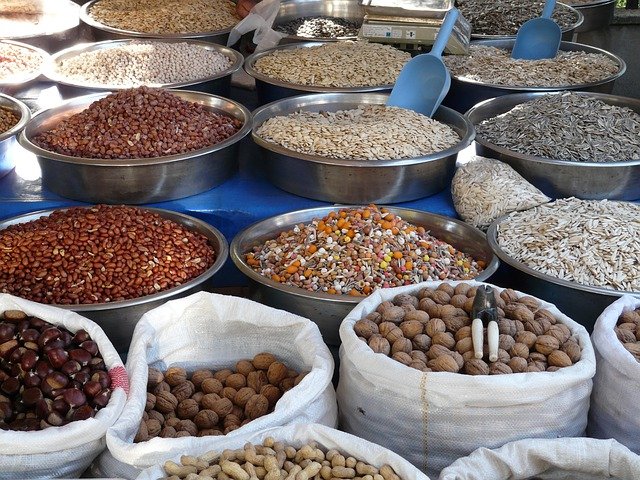
Have you ever heard of antinutrients? We are used to hearing the different benefits present in the nutrients in food. However, antinutrients are often quite unknown to many people. These components, which are found naturally in some foods, are so named because they reduce the nutritional values of foods and can prevent the absorption of nutrients such as vitamins and minerals.
Antinutrients are a compound found mainly in seeds and legumes, although they can also appear in some leaves and fruits. It is important that before consuming these foods, we eliminate these components so that they do not produce any adverse effect on our health.
What are antinutrients and what foods are they in?
As we have said, antinutrients are compounds that are found naturally in some foods and that can reduce their nutritional value, either because they prevent the absorption of some nutrients such as proteins, minerals or vitamins, or they inhibit the function of enzymes. that are responsible for facilitating the assimilation of some foods.
These types of components are found mainly in seeds, cereals, legumes and nuts, although they are also part of some leaves and fruits such as spinach, cocoa or tea leaves. Although it may seem that antinutrients have no use, they are actually found naturally in these foods for one reason: these compounds are responsible for protecting these foods from the predators that consume them, since if they are consumed without eliminating them, the antinutrients can produce adverse effects. Adverse effects on the digestive system such as stomach pain, indigestion and gas or flatulence.
What types of antinutrients exist
There are different types of antinutrients depending on the food where it is found and the nutrient it affects. Therefore, below we will explain the main antinutrients that we can find in food:
- Phytates: It is a compound found in bread and cereals such as oatmeal, millet and brown rice that can prevent the absorption of minerals such as zinc and iron. However, it has been proven that by soaking cereals, phytate is converted into inositol, an antioxidant compound that improves the properties of these foods.
- Oxalates: it is a substance that is part of different vegetables and seeds such as spinach, beets, chard, nuts, buckwheat, cocoa and rhubarb, among others. Oxalates prevent the correct assimilation of some minerals, especially iron and calcium.
- Avidin: it is a protein found within raw egg white. This antinutrient prevents our body from assimilating some vitamins, especially vitamin B8. That is why the egg is a food that should always be eaten cooked.
- Tannins: This antinutrient is mainly found in tea and coffee leaves and can prevent the assimilation of minerals such as iron, manganese and calcium. Tannins can also reduce the absorption of some vitamins, especially thiamin and vitamin B12.
- Saponins: this component is present in the outer skin of some legumes such as chickpeas, soybeans and quinoa. Saponins are the antinutrient that gives these foods that characteristic bitter taste and, if not eliminated correctly, they can both cause irritation in the stomach and reduce the absorption of minerals such as iron.
How to remove antinutrients with soaking and cooking
In foods such as legumes and grains, antinutrients can be removed by soaking and cooking these foods. On the one hand, soaking not only helps to hydrate these vegetables but also activates the seeds and reduces the content of phytates and saponins in these foods. On the other hand, cooking enhances the power of soaking and also heat manages to inhibit the effects of antinutrients since it changes the structure of these substances. To use this method you will simply have to follow these steps:
- First of all, you will have to wash the cereals or legumes to remove dirt and reduce the saponins it contains.
- Once washed, you will have to soak them in a container with plenty of warm water. Although there is no specific time, what is most recommended is to leave them in the water as long as possible. We can also add a little lemon juice to the water to enhance the elimination of phytates.
- Finally, we will boil the seeds or cereals for the time indicated on the product packaging. We can add a little salt to the water with which we will boil the vegetable so that the food is more digestible.
Germination to remove antinutrients
Germination is a method to eliminate this type of compounds (especially phytates) and consists of the soaking time lasting much longer. In this way, the seeds manage to germinate, reducing antinutrients and increasing the release of minerals and vitamins.
To use this method of germination to remove antinutrients from food you will have to follow these steps:
- Wash the seeds to remove any remaining dirt.
- Then let them soak between 2 and 12 hours in cold water.
- When the indicated time passes, rinse the seeds and then drain all the water.
- Put the seeds in a container to germinate and leave them in a place where they get sunlight.
- You will need to rinse and drain 3-4 times every 8 hours until the seeds have germinated.






